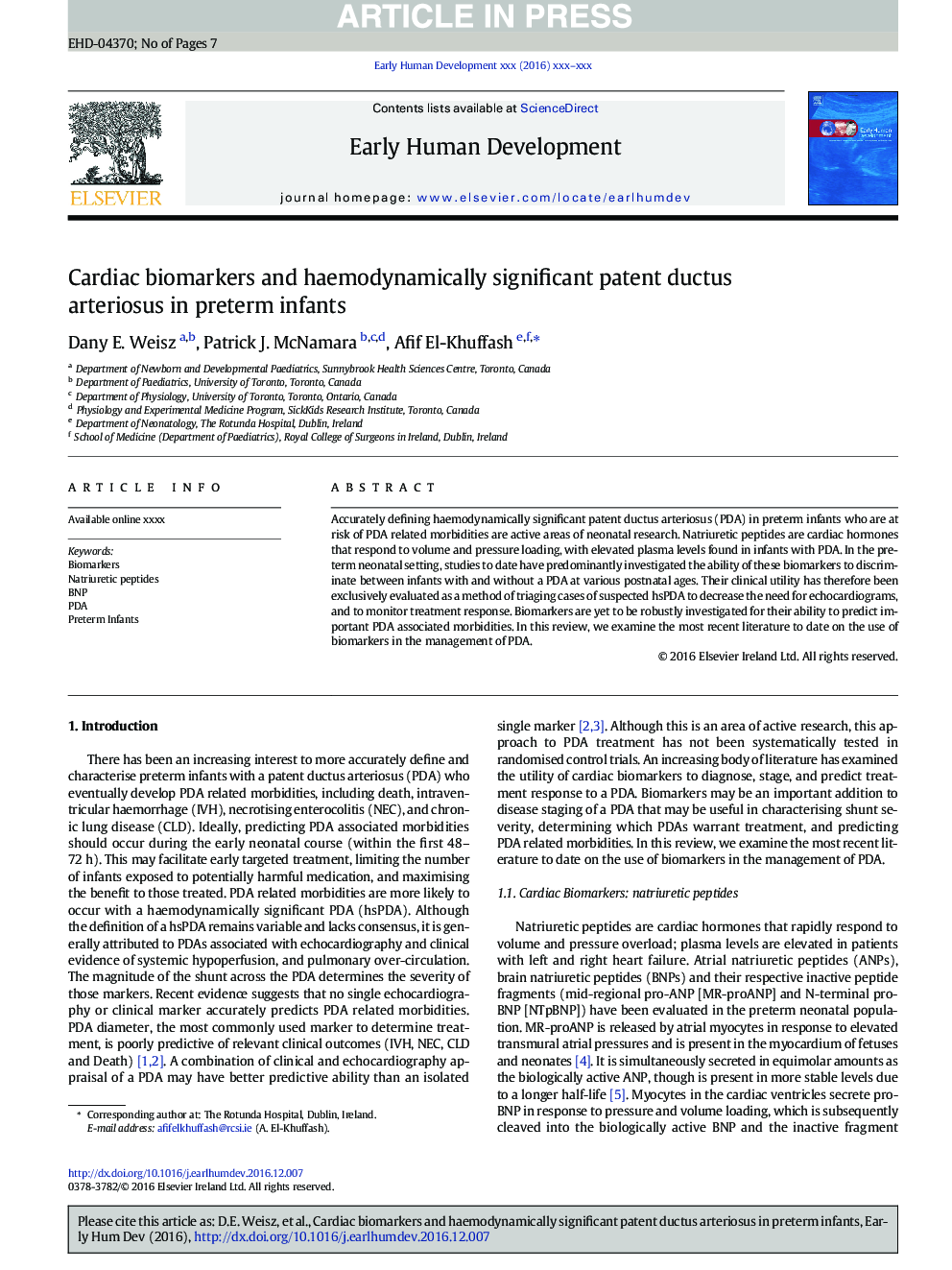| Article ID | Journal | Published Year | Pages | File Type |
|---|---|---|---|---|
| 5691318 | Early Human Development | 2017 | 7 Pages |
Abstract
Accurately defining haemodynamically significant patent ductus arteriosus (PDA) in preterm infants who are at risk of PDA related morbidities are active areas of neonatal research. Natriuretic peptides are cardiac hormones that respond to volume and pressure loading, with elevated plasma levels found in infants with PDA. In the preterm neonatal setting, studies to date have predominantly investigated the ability of these biomarkers to discriminate between infants with and without a PDA at various postnatal ages. Their clinical utility has therefore been exclusively evaluated as a method of triaging cases of suspected hsPDA to decrease the need for echocardiograms, and to monitor treatment response. Biomarkers are yet to be robustly investigated for their ability to predict important PDA associated morbidities. In this review, we examine the most recent literature to date on the use of biomarkers in the management of PDA.
Related Topics
Health Sciences
Medicine and Dentistry
Obstetrics, Gynecology and Women's Health
Authors
Dany E. Weisz, Patrick J. McNamara, Afif El-Khuffash,
